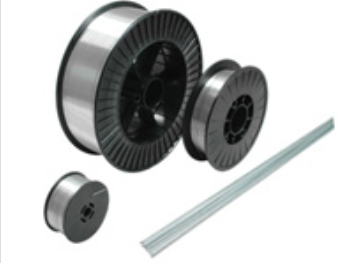Sharing Some Knowledge And Essential Must-Know Information About Welding Materials
1. What is welding material? What is included?
Answer: Welding materials include electrodes, wires, fluxes, gases, electrodes, gaskets, etc.
2. What is a welding wire?
Answer: When welding, it is used as a filler metal and is also used as a conductive wire-called welding wire. There are two types of solid wire and flux-cored wire. Commonly used solid wire model: ER50-6 (brand: H08Mn2SiA).
3. Why is the MAG welded joint more impact tough than the CO2 welded joint?
Answer: When MAG welding, the active gas is only 20%, the transition coefficient of alloy elements in the welding wire is high, and the impact toughness of the weld is high. The active gas for CO2 welding is 100%. The combined deoxidation of manganese and silicon alloy elements in the welding wire has a slightly lower alloy element transition coefficient and the impact toughness of the weld is not as high as that of MAG welding. Such as Tangshan Kobelco MG-51T welding wire (equivalent to ER50-6) its impact toughness value at room temperature: MAG: 160J; CO2: 110J.
4. What is flux cored wire?
Answer: A type of welding wire made by rolling a thin steel strip into a round steel pipe, and filling it with a certain amount of medicine powder at the same time.
5. Why is the flux-cored wire shielded with CO2 gas?
Answer: There are two types of flux-cored welding wire according to the protection method: flux-cored gas shielded welding wire and flux-cored self-shielded welding wire. Flux core gas shielded welding wire is generally protected by CO2 gas, which belongs to the form of joint protection of gas and slag. The weld seam is well formed and the comprehensive mechanical performance is high.
6. Why are there indentation pores on the surface of the flux-cored wire?
Answer: Because the flux-cored wire is a tubular wire wound from a thin steel strip, it belongs to a seam wire; the moisture in the air will penetrate the core through the gap, and the flux will be wet (cannot be dried), resulting in indentation pores in the weld.
7. Why are there technical requirements for CO2 gas purity?
Answer: Generally, CO2 gas is a by-product of chemical production. Its purity is only about 99.6%. It contains trace impurities and moisture, which will cause defects such as pores in the weld. Welding important products must use gas with CO2 purity ≥99.8%, with less pores in the weld, low hydrogen content, and good crack resistance.
8. Why are there higher technical requirements for argon purity?
Answer: There are currently three types of argon on the market: ordinary argon (purity of about 99.6%), pure argon (purity of about 99.9%), high-purity argon (purity of 99.99%). The first two can weld carbon steel and stainless steel; welding aluminum and Non-ferrous metals such as aluminum alloys, titanium, and titanium alloys must use high-purity argon; avoid oxidation of the weld and heat-affected zone and prevent welding.
9. Why are there various sizes of TIG welding nozzles?
Answer: There are five specifications of 4-8 # nozzles. We can use 4-5 # nozzles for welding carbon steel. 6-7 # large nozzles should be used for welding stainless steel and aluminum and aluminum alloys to strengthen the protection range of welds and heat affected zones. . Welding non-ferrous metals such as titanium and titanium alloys should use 7-8mm larger nozzles to prevent oxidation of the weld and heat affected zone.
10. What is an acid electrode?
Answer: Welding electrodes with a large amount of acid oxide in the coating, such as AC / DC electrodes 422 (E4303) and 502 (E5003).
11. What is alkaline electrode?
A: The electrode contains a large amount of basic oxides and fluorides, such as electrode 507 (E5015), electrode 506 (E5016).
12. What is the cellulose type (only for downward vertical welding) electrode?
Answer: Welding rods containing a large amount of organic matter in the coating, dedicated to vertical vertical welding of pipes and thin plate structures.
For example, E6010 (equivalent to E4310, J425G) is suitable for primer welding, heat welding, and filling welding. E8010 (equivalent to E5511, J555) is suitable for heat welding, filling welding and cover welding. Generally, the surface of the electrode is welded with low hydrogen; E7048 (equivalent to J506X) has a clean and beautiful appearance.
13. Why should the electrode be dried strictly before welding?
Answer: Welding rods often deteriorate process performance due to moisture absorption, causing arc instability, increased spatter, and prone to defects such as pores and cracks. Therefore, the electrode must be dried strictly before use. Generally, the drying temperature of acid welding electrode is 150-200 ℃, time is 1 hour; the drying temperature of alkaline electrode is 350-400 ℃, time is 1–2 hours, and it is placed in 100-150 ℃ incubator after drying. Inside, take it with you.
Media Contact
Company Name: Changzhou Hucheng Imp.and Exp. Co., Ltd.
Contact Person: Hucheng
Email: Send Email
Phone: 0086-519-83978895
Country: China
Website: https://www.czhucheng.com/


